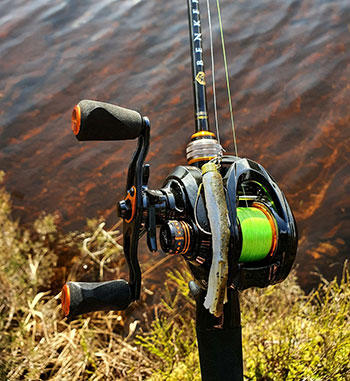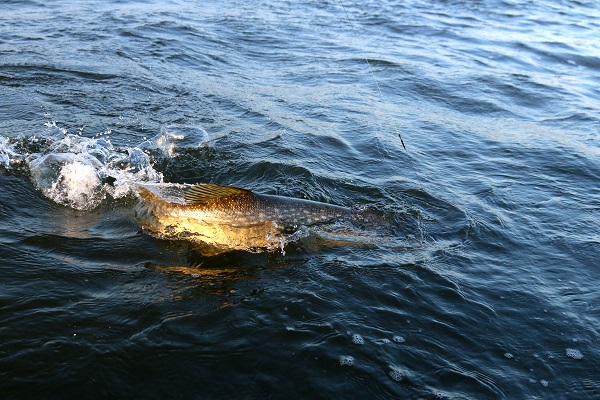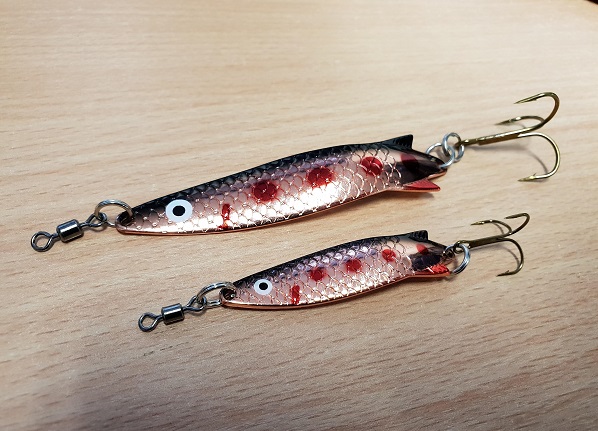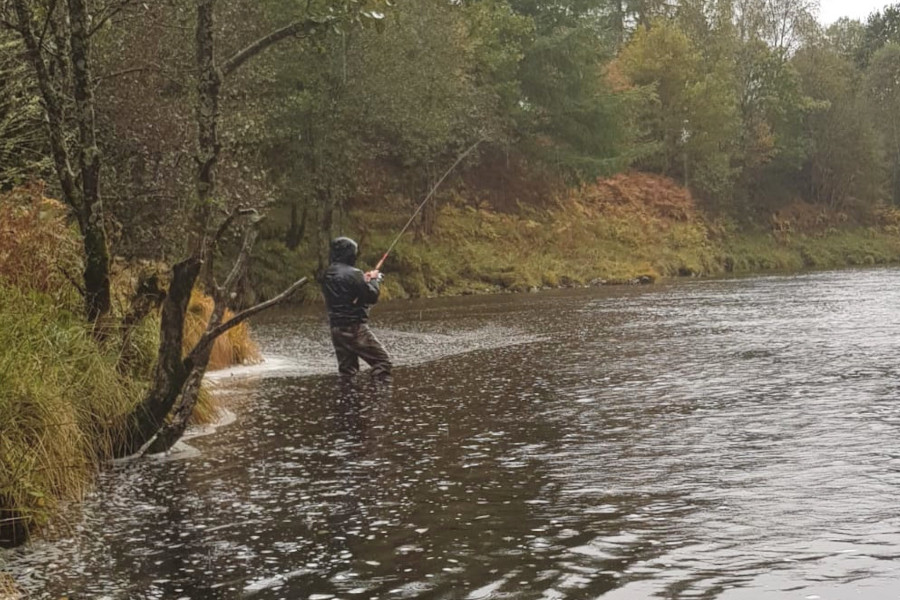What is BFS?
BFS stands for Bait Finesse System. This system is made up of a baitcasting reel with a shallow lightweight spool and a light, or ultralight, action baitcaster rod. This setup allows the angler to effectively fish lures in the 1g to 7g weight range, something that has not previously been possible with a traditional baitcasting setup. Lures in this weight range would normally have been fished using a standard spinning rod and fixed spool reel. BFS fishing started in Japan where lure fishing is hugely popular. The reason for the Japanese developing BFS tactics is however debated – some will say it was initially developed to target trout in mountain streams and rivers, while others will argue that it was specifically aimed at catching bass on highly pressured waters.
BFS rods and reels gave anglers the ability to cast smaller baits on lighter lines and allows anglers to present a lure that large, wary fish are more willing to take. Regardless of its initial intended purpose, more and more anglers here in the UK are starting to see the benefits of this ultralight baitcaster style of fishing for targeting species such as perch, trout and many more.
What makes a BFS reel?
As previously mentioned, a BFS reel usually has an ultralight weight spool that is very shallow. These shallow spools tend to be heavily ported to help further reduce weight. You will find that the majority of these spools will weigh around 9g or less. The reason for this emphasis on a lightweight spool is due to the nature in which a baitcaster reel works – the lighter the spool the less inertia it has, therefore it is easier to get moving and allows for improved casting performance with lighter lures.
The braking systems are also far more advanced and many have high-tech magnetic brakes. These high performance braking systems are required when casting ultralight lures as precision braking is required to help avoid backlashes and overruns. Unlike traditional baitcaster reels, many of the newer BFS reels also feature a drag clicker. This is a handy feature as you will likely be fishing light lines and being able to tell how much drag you have set and when the fish is taking line throughout the fight helps ensure you aren’t going to get broken off and lose fish. Smooth running micro bearings are another key feature to any BFS reel. BFS reels are built with minimal tolerances, for example the gap between the spool and frame needs to be built to a fine specification with as little gap as possible to help avoid fine lines becoming stuck down the side of the spool. Combine all these components into a lightweight and compact package and you have a baitcasting reel capable of casting lures as light as 1 gram!
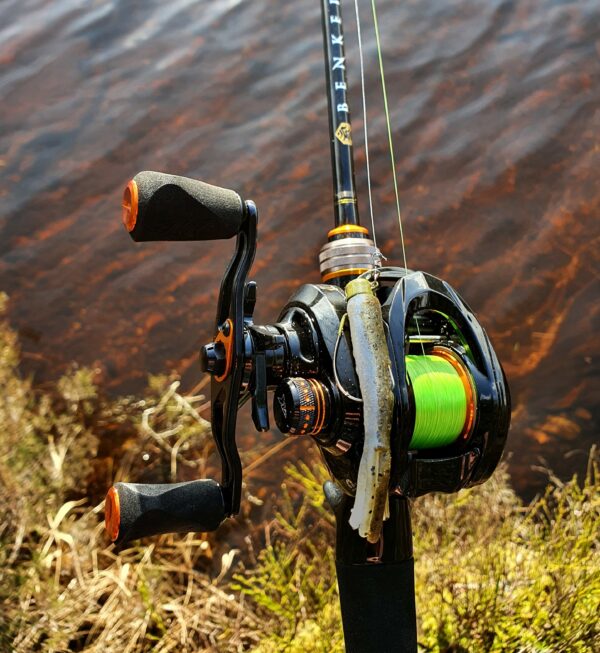
Lines
Monofilament, fluorocarbon and braid can all be used as your mainline on a BFS reel, however there are pros and cons to these depending on a few factors. Some reel manufacturers may recommend one over the other due to the design of the spool they have on their reel. Some lines may damage and distort the spool if used incorrectly and this may cause irreparable damage to your new BFS reel, so it’s important to read what recommendations the supplier has given.
Monofilament lines in 2-4lb breaking strains tend to be the go to sizes. Mono offers a level of stretch that can be beneficial in certain applications. This stretch can offer some additional protection to lighter lines, particularly when using a stiff, fast action rod.
Fluorocarbon in the 2-4lb breaking strains is also a popular choice for BFS anglers. Using fluorocarbon as your mainline also removes the need to tie leader knots. 30 to 50m of fluorocarbon will fill most BFS spools.
Braid in .06 or .08 PE (9-13lb) in an 8 strand construction is also a popular choice. Particularly when fishing soft plastics and slow or static presented baits, such as a NED rig. The 8 strand construction is important as an 8 strand braid has a much rounder profile. A 4 strand braid has a flat profile and is more inclined to cut in on itself on the spool. The rounder profile of the 8 strand improves line lay which in turn helps in reducing your chances of tangles and as a result improves the overall casting performance of your setup. When using a braided mainline a fluorocarbon leader is still required and a neat compact knot such as an FG or albright knot is what we would recommend. Braid will offer improved bite detection compared to mono and fluorocarbon as well. It is important not to overfill your reel, 50m to 70m of braid is more than adequate and will aid your casting. Another upside of this is that you can split your spool of braid and use it to fill the reel two or three times.
The amount of line these BFS spools hold does look alarmingly low however you do need to be realistic about casting distance. These are not set ups to be cast to the horizon, therefore the line capacity does not need to be that of a standard baitcaster or fixed spool reel. Plus, smaller amounts of line avoids adding excess weight to the spool and helps maintain the reels ability to cast light lures.
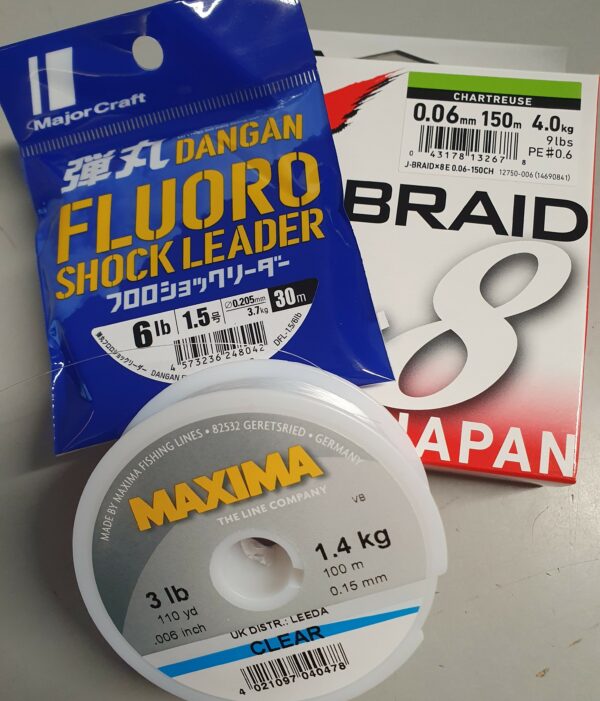
Rods
BFS rods usually fall into the light and ultralight rod class category. There are a number of different actions to consider when choosing a BFS rod and this comes down to where you are primarily going to use it and what you intend to target.
Ultralight BFS rods are primarily used for casting lures in the 0.5-7g range while light action rods are better suited for casting 3-12g lures.
Rods can vary in length from just under 4ft up to around 6ft6 depending on their intended application.
Trout river/stream
Trout river or stream rods are generally 3ft6 to 5ft length and have a moderate fast action. When fishing in streams and rivers, having a short rod is beneficial due to the likelihood of you fishing in among overgrown trees and vegetation. They are also an advantage when wading as the deeper you wade the less room you have to perform particular casts. These shorter rods are almost like an extension to your arm and offer pinpoint accuracy, making dropping your lure into a likely pocket under an overhanging bush, where a trout is likely to be lying much easier.. The moderate fast action offers a softer tip that allows you to use your lure to load the rod quickly in confined spaces.
Trout Area
Trout Area rods are mostly 5ft6” or longer with a softer, more parabolic action. A trout area rod is great when fishing with metal spoons and hard baits on stillwaters. When trout area fishing, the chance of encountering a larger stocked fish is significantly increased so their parabolic action absorbs lunges and better protects lighter tippets. The longer length of these area rods also aids casting distance which can be useful on larger waters.
Perch
A BFS rod intended for lure fishing for fish like perch are generally longer, fast action rods. These most commonly fall into the 5ft6” to 6ft6” category. Couple this fast action rod with a braided mainline and the setup offers maximum sensitivity and fantastic bite detection. This superior feedback to the angler is essential when using slow or static style techniques such as a NED or Cheb rig. The faster action, stiffer blank is also great for working any jig style lure without compromising on that all important sensitivity.
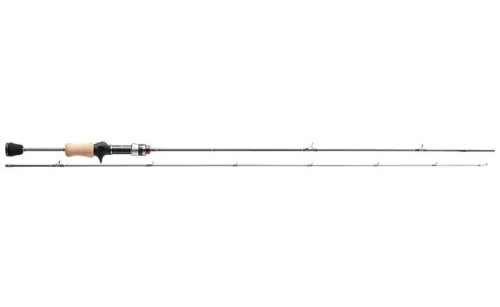
What lures can I use on my BFS setup?
The possible lure choices are endless when it comes to BFS. If it falls in and around that 1-7g category then it can most likely be fished effectively on a BFS setup! Crankbaits, metal lures and soft lures on a range of rigs can all be fished effectively for a multitude of species on ultralight BFS tackle.
Soft lures rigged on jig heads, Niko, NED, Jika, Cheb, Texas, Carolina and dropshot rigs are particularly effective when targeting species such as perch, while crankbaits, spinners and metal spoons or jigs are great for targeting trout.

Why get into BFS?
If you have never used a baitcasting rod before we strongly recommend picking one up, just to get a feel for it, the next time you are in your local tackle store.
The ergonomic design of a baitcasting outfit, feels and balances perfectly. This style of rod is something that needs to be experienced to appreciate it fully, and this is only magnified when you scale it down to a BFS setup. You now have the benefits of extreme comfort and balance combined with an ultralight, super sensitive rod that provides maximum feedback and enjoyment once a fish is hooked, no matter the size!. Once you hone in your casting technique with a baitcaster they really are a pleasure to use and offer outstanding accuracy and casting control.
If you are a technical minded angler that is looking for a new challenge then BFS might just be for you!

